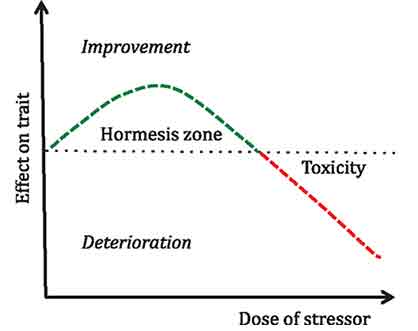An important concept to understand when embarking on a strength and conditioning program is hormesis. It has been shown that in certain instances, when an organism experiences a physical or environmental stressor, it reacts by enacting a supercompensatory response. This response then causes a beneficial increase in resilience to the stressor, and an overall improvement in the health and performance of the organism. This adaptive, fortifying, supercompensatory response to certain forms of stress is called hormesis. The stress that triggers these responses can also be known as eustress. Hormesis and eustress are the fundamental drivers behind the rational governing all forms of training and conditioning. The physical and performance capacities of the trainee are pushed to beyond a certain threshold, the exercise or conditioning stimulus is terminated, and the trainee is allowed to recover. In anticipation of the recurrence of the training stressor, the trainee’s body has improved its physical and performance capacities, and the trainee has experienced a net increase in health, strength, and performance (depending on the training variables). We undergo this hormetic process each and every time we workout, and it is the reason why when conditions are correct, and the stress we experience is handled appropriately, we see improvements in our health and in our bodies.
But what happens when the hormetic stressor we expose ourselves to is not handled appropriately? When this happens, we lose most, if not all, of the benefits we are trying to achieve. This is why the idea of dose is essential to a proper understanding of hormesis. The dose of the eustress must be carefully controlled if we want maximize the potential benefits and minimize the potential cost of the stressor. This point especially applies to strength training. Is is essential that when designing a program we impose the proper parameters of volume and intensity to elicit maximal adaptive benefits for the trainee. In strength / muscle growth training this translates to short workouts where very high levels of effort and intensity are being reached. With these tenets in place we can be sure that our workouts don’t devolve into pure stimulus seeking (training just because it feels good), and therefore risking overtraining. On the other hand these principals also remind us that we must work hard enough to earn the adaptations we seek.
